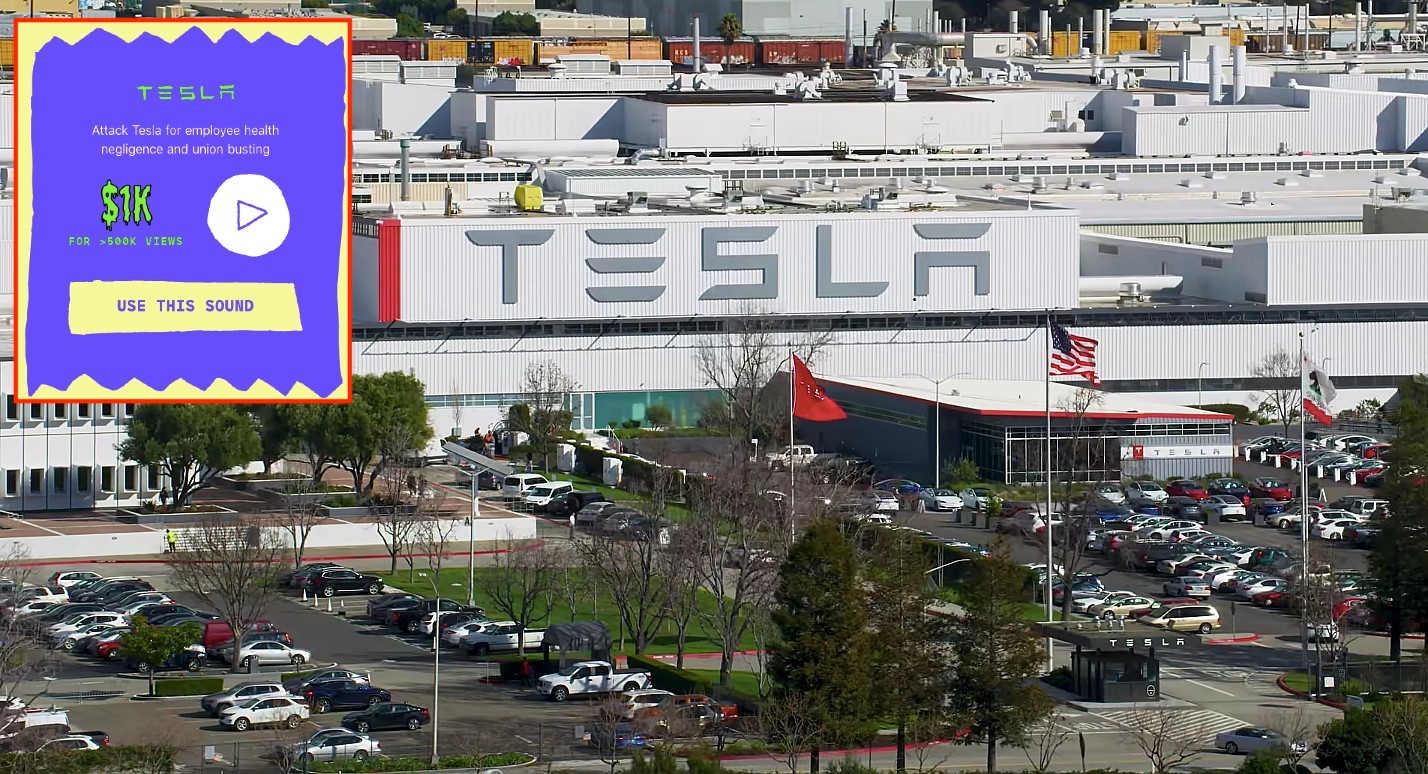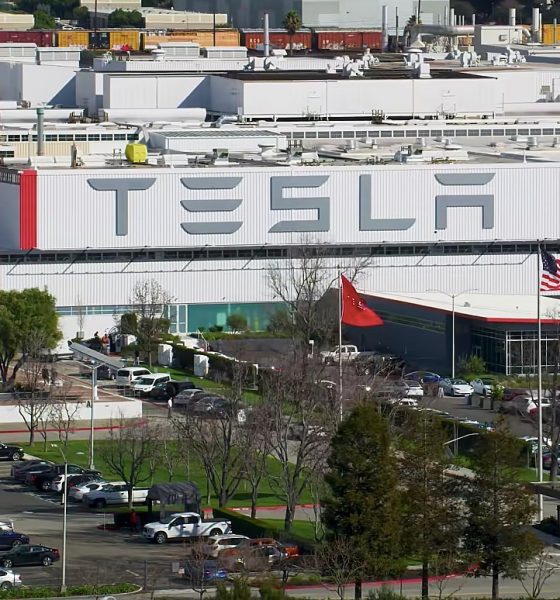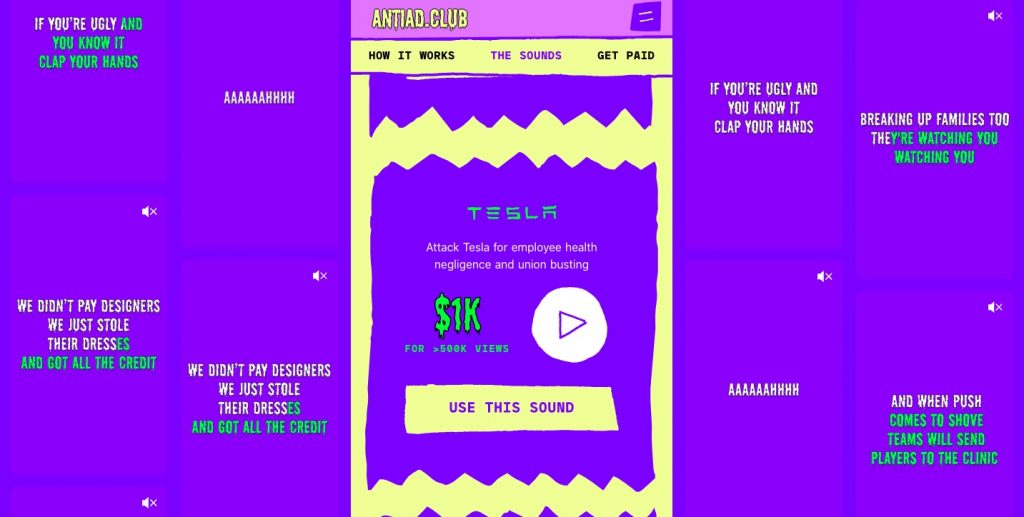

News
TikTok users urged to attack Tesla for $1K reward in bizarre ‘takedown’ campaign
Tesla has had its own fair share of critics over the years, and numerous efforts have been initiated with the goal of attacking the company. These include a long-running disinformation campaign from the company’s skeptics, as well as a strong social media presence from Tesla’s most ardent and aggressive critics. More recently, Tesla has become the target of a rather bizarre social media effort on TikTok, one of the most popular viral video-sharing social networking services on the internet today.
MSCHF, an internet group that has made a name for its cynical viral campaigns and products, has launched an effort aimed at taking down companies that it deems as evil. Among these companies are Tesla, Amazon, Facebook, Palantir, and, interestingly enough, TikTok itself, to name a few. Participants in the campaign are required to post a “takedown” video of one of the target companies, though each clip must utilize one of nine custom sounds that MSCHF has created.

To encourage users of the video-sharing platform to participate in its campaign, MSCHF is offering rewards for every “takedown” video, provided that they hit a target number of views. In Tesla’s case, the internet group is offering $1,000 for every video that attacks the electric car maker, provided that they hit 500,000 views or more. Interestingly enough, the custom sound that MSCHF created for Tesla takedown videos featured Elon Musk’s name in the popular song “Bad Guy” by Billie Eilish.
As could be seen on MSCHF’s official page, its recent campaign is mainly aimed at “killing” brands that it deems evil or are participating in questionable actions. TikTok, for example, is a $10 target due to its “content suppression” initiatives, Amazon is a $100 target for its “human rights violations and union busting,” and Facebook is a $4,000 target due to its proliferation of “hate speech and fake news.” Tesla, for its part, became a target over its alleged “employee health negligence and union busting.”
In a previous interview with Business Insider, Gabriel Whaley, the founder and CEO of MSCHF, noted that he does not even see the group as a company. This is evident in the group’s projects, which range from browser add-ons that allow users to disguise Netflix watching as a conference call, to tangible products like Nike sneakers that are filled with Holy Water. Describing the company’s activities, Whaley noted that MSCHF exists to make light of “how much everything sucks.”
“We’re trying to do stuff that the world can’t even define. Our perspective is everything is funny in a nihilistic sort of way. We’re not here to make the world a better place. We’re making light of how much everything sucks,” he said.
Quite interestingly, TikTok has been used as a positive platform for Tesla as well. Popular YouTuber David Dobrik, for example, utilized TikTok for a rather heartwarming Tesla Model 3 giveaway. The video-sharing platform is also utilized by Tesla China to strengthen its social media presence and address customer inquiries.

News
Tesla FSD fleet is nearing 7 billion total miles, including 2.5 billion city miles
As can be seen on Tesla’s official FSD webpage, vehicles equipped with the system have now navigated over 6.99 billion miles.

Tesla’s Full Self-Driving (Supervised) fleet is closing in on almost 7 billion total miles driven, as per data posted by the company on its official FSD webpage.
These figures hint at the massive scale of data fueling Tesla’s rapid FSD improvements, which have been quite notable as of late.
FSD mileage milestones
As can be seen on Tesla’s official FSD webpage, vehicles equipped with the system have now navigated over 6.99 billion miles. Tesla owner and avid FSD tester Whole Mars Catalog also shared a screenshot indicating that from the nearly 7 billion miles traveled by the FSD fleet, more than 2.5 billion miles were driven inside cities.
City miles are particularly valuable for complex urban scenarios like unprotected turns, pedestrian interactions, and traffic lights. This is also the difference-maker for FSD, as only complex solutions, such as Waymo’s self-driving taxis, operate similarly on inner-city streets. And even then, incidents such as the San Francisco blackouts have proven challenging for sensor-rich vehicles like Waymos.
Tesla’s data edge
Tesla has a number of advantages in the autonomous vehicle sector, one of which is the size of its fleet and the number of vehicles training FSD on real-world roads. Tesla’s nearly 7 billion FSD miles then allow the company to roll out updates that make its vehicles behave like they are being driven by experienced drivers, even if they are operating on their own.
So notable are Tesla’s improvements to FSD that NVIDIA Director of Robotics Jim Fan, after experiencing FSD v14, noted that the system is the first AI that passes what he described as a “Physical Turing Test.”
“Despite knowing exactly how robot learning works, I still find it magical watching the steering wheel turn by itself. First it feels surreal, next it becomes routine. Then, like the smartphone, taking it away actively hurts. This is how humanity gets rewired and glued to god-like technologies,” Fan wrote in a post on X.
News
Tesla starts showing how FSD will change lives in Europe
Local officials tested the system on narrow country roads and were impressed by FSD’s smooth, human-like driving, with some calling the service a game-changer for everyday life in areas that are far from urban centers.

Tesla has launched Europe’s first public shuttle service using Full Self-Driving (Supervised) in the rural Eifelkreis Bitburg-Prüm region of Germany, demonstrating how the technology can restore independence and mobility for people who struggle with limited transport options.
Local officials tested the system on narrow country roads and were impressed by FSD’s smooth, human-like driving, with some calling the service a game-changer for everyday life in areas that are far from urban centers.
Officials see real impact on rural residents
Arzfeld Mayor Johannes Kuhl and District Administrator Andreas Kruppert personally tested the Tesla shuttle service. This allowed them to see just how well FSD navigated winding lanes and rural roads confidently. Kruppert said, “Autonomous driving sounds like science fiction to many, but we simply see here that it works totally well in rural regions too.” Kuhl, for his part, also noted that FSD “feels like a very experienced driver.”
The pilot complements the area’s “Citizen Bus” program, which provides on-demand rides for elderly residents who can no longer drive themselves. Tesla Europe shared a video of a demonstration of the service, highlighting how FSD gives people their freedom back, even in places where public transport is not as prevalent.
What the Ministry for Economic Affairs and Transport says
Rhineland-Palatinate’s Minister Daniela Schmitt supported the project, praising the collaboration that made this “first of its kind in Europe” possible. As per the ministry, the rural rollout for the service shows FSD’s potential beyond major cities, and it delivers tangible benefits like grocery runs, doctor visits, and social connections for isolated residents.
“Reliable and flexible mobility is especially vital in rural areas. With the launch of a shuttle service using self-driving vehicles (FSD supervised) by Tesla in the Eifelkreis Bitburg-Prüm, an innovative pilot project is now getting underway that complements local community bus services. It is the first project of its kind in Europe.
“The result is a real gain for rural mobility: greater accessibility, more flexibility and tangible benefits for everyday life. A strong signal for innovation, cooperation and future-oriented mobility beyond urban centers,” the ministry wrote in a LinkedIn post.
News
Tesla China quietly posts Robotaxi-related job listing
Tesla China is currently seeking a Low Voltage Electrical Engineer to work on circuit board design for the company’s autonomous vehicles.

Tesla has posted a new job listing in Shanghai explicitly tied to its Robotaxi program, fueling speculation that the company is preparing to launch its dedicated autonomous ride-hailing service in China.
As noted in the listing, Tesla China is currently seeking a Low Voltage Electrical Engineer to work on circuit board design for the company’s autonomous vehicles.
Robotaxi-specific role
The listing, which was shared on social media platform X by industry watcher @tslaming, suggested that Tesla China is looking to fill the role urgently. The job listing itself specifically mentions that the person hired for the role will be working on the Low Voltage Hardware team, which would design the circuit boards that would serve as the nervous system of the Robotaxi.
Key tasks for the role, as indicated in the job listing, include collaboration with PCB layout, firmware, mechanical, program management, and validation teams, among other responsibilities. The role is based in Shanghai.
China Robotaxi launch
China represents a massive potential market for robotaxis, with its dense urban centers and supportive policies in select cities. Tesla has limited permission to roll out FSD in the country, though despite this, its vehicles have been hailed as among the best in the market when it comes to autonomous features. So far, at least, it appears that China supports Tesla’s FSD and Robotaxi rollout.
This was hinted at in November, when Tesla brought the Cybercab to the 8th China International Import Expo (CIIE) in Shanghai, marking the first time that the autonomous two-seater was brought to the Asia-Pacific region. The vehicle, despite not having a release date in China, received a significant amount of interest among the event’s attendees.








